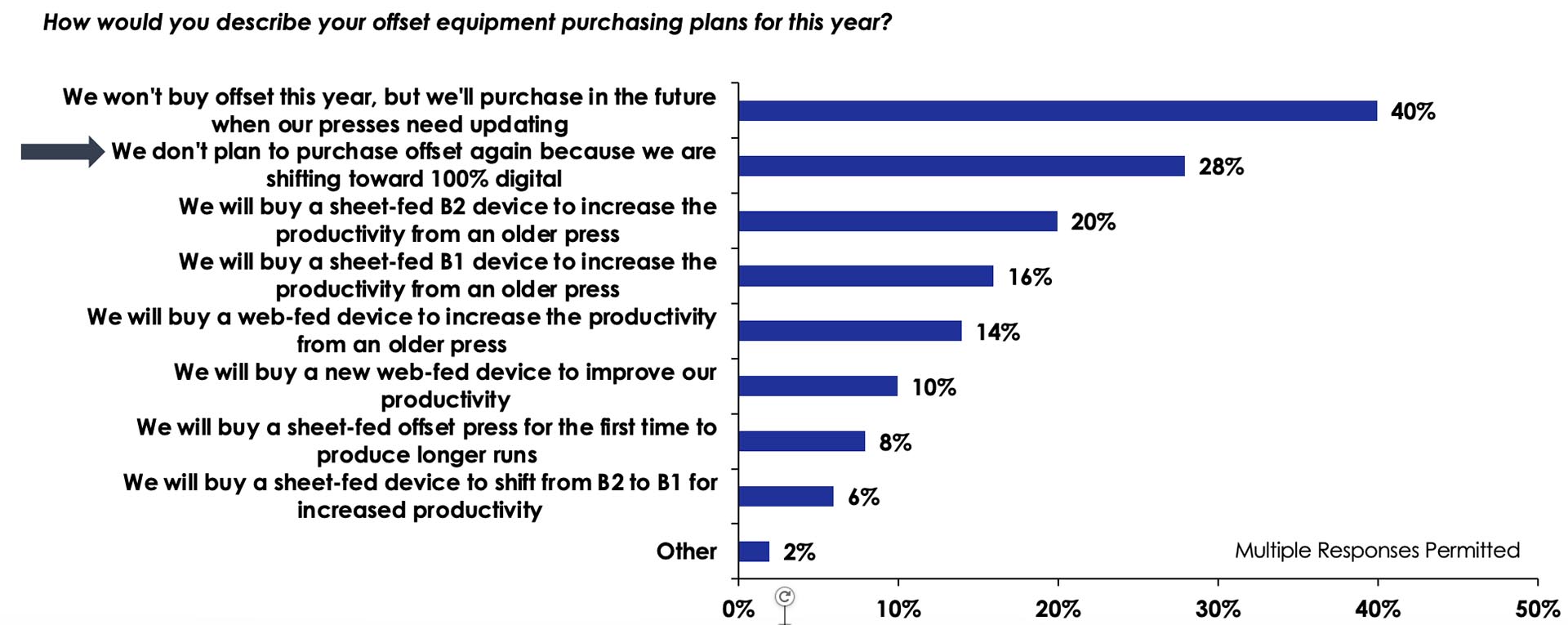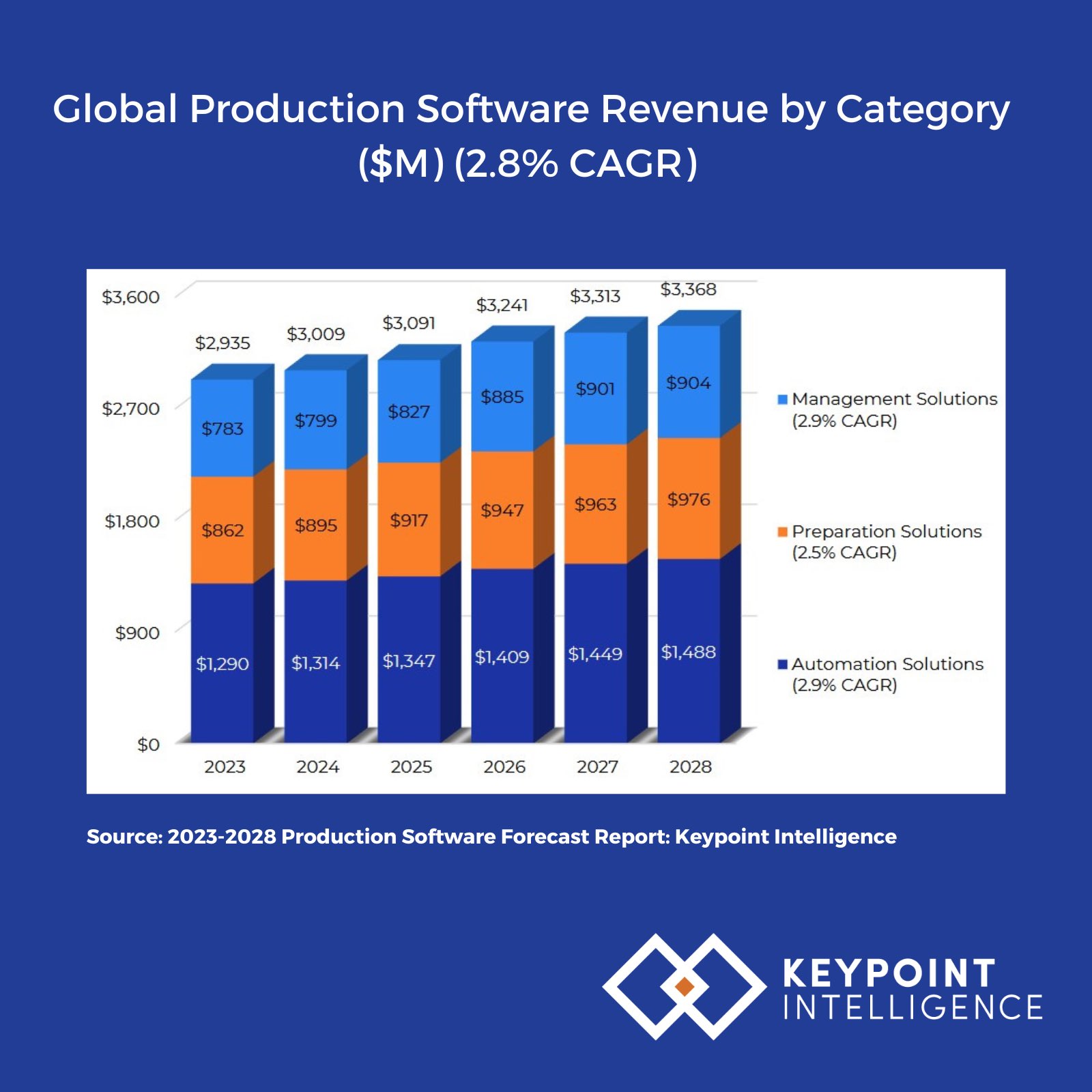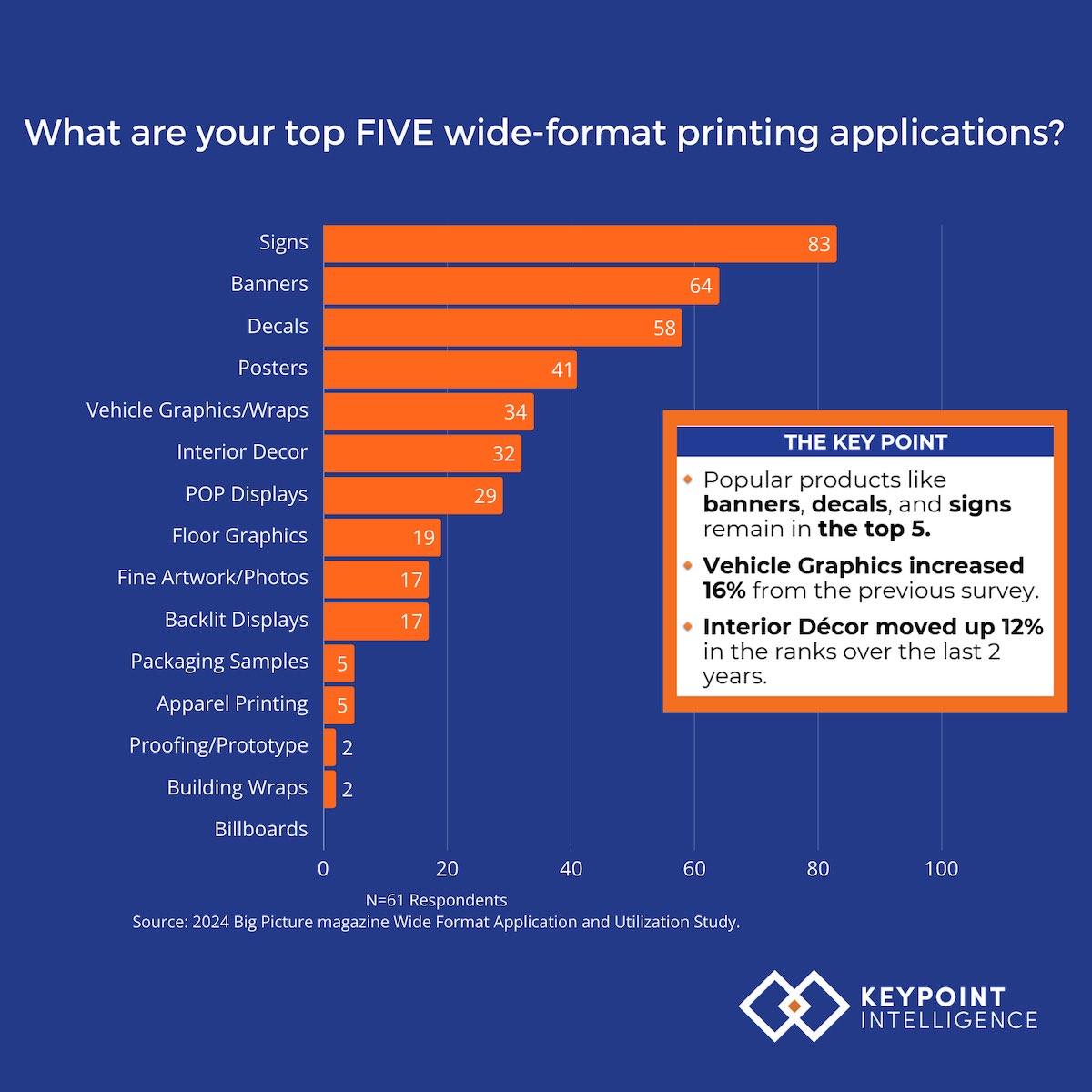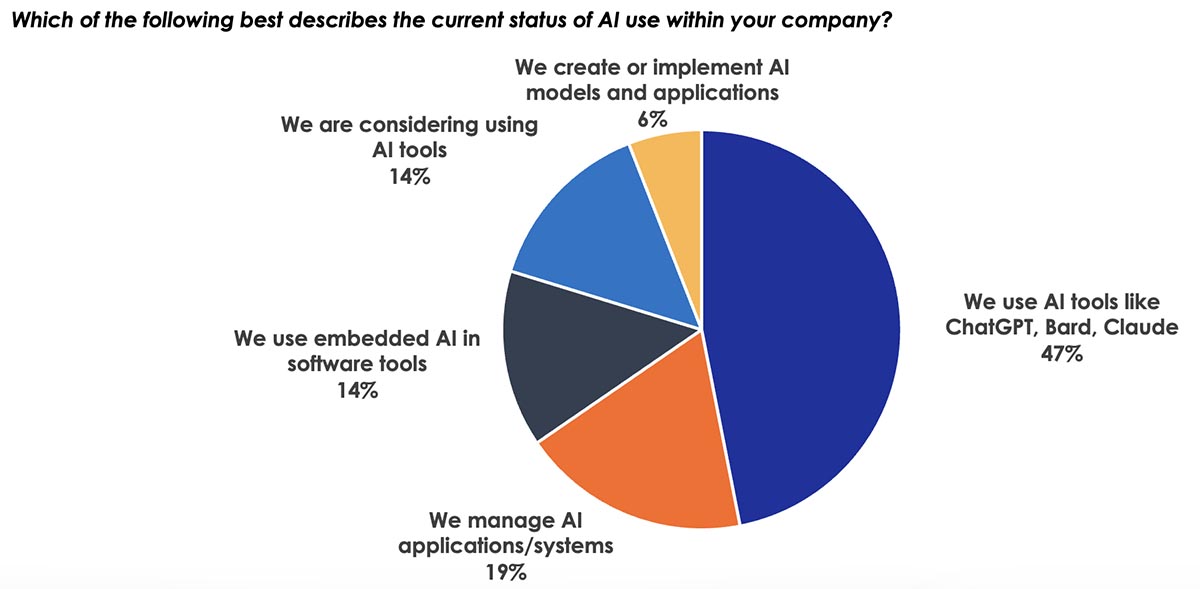- Augmented reality users and developers can expect improvements to the technology throughout 2020 with advancements like the rollout of a 5G wireless internet infrastructure.
- The smartphone is the dominant go-to consumer device for AR at this time.
- According to Keypoint Intelligence – InfoTrends’ research, the majority of AR users don’t even realize that they are, in fact, AR users.
By Colin McMahon
Introduction
Even though augmented reality (AR) has been around for decades, many still consider the technology to be futuristic and far off. On the contrary, AR is part of the here and now. It has been embraced by many consumers—even though some of them might not be aware that they are using it! In the business space, AR technology exists on a multitude of devices from low-end smartphones and tablets to advanced headsets capable of performing far more complex operations. In the consumer space, however, AR is bound to mobile devices like smartphones or tablets. Although a few vendors have attempted to develop AR headsets for consumers, all have failed to achieve mass market appeal.
Even so, Keypoint Intelligence – InfoTrends believes that it is only a matter of time before a successful consumer-focused AR headset comes to market. Furthermore, this might happen sooner than some anticipate! Once this milestone is reached, it will have an incredible impact on AR technology, including all previously released applications. For print service providers (PSPs) that are already working with AR or considering investing in the technology, it is important to anticipate what might happen when a dedicated AR device finally goes mainstream.
Easier AR Use, Smaller Base
Before diving into the precise changes that will occur with dedicated hardware, it should be noted that not all AR advancements are tied to headset use. AR users and developers can expect improvements to the technology throughout 2020 with advancements like the rollout of a 5G wireless Internet infrastructure. A more robust Internet connection means more cloud computing, enabling smartphones and tablets to perform more complex operations without increasing hardware capabilities. This will enable smartphone- and tablet-based AR to perform more powerful operations, and some of these features will improve real-time performance.
Although 5G will help improve smartphones, mobile hardware will still not be as robust as a dedicated headset built exclusively for AR use. The reasoning for this is simple: even the best mobile-based AR experiences are not truly hands-free. Users must hold their devices with one hand while interacting with them using the other. This limits the possibilities, and also hinders user interface (UI) design. Imagine an engineer attempting to work with an augmented diagram. Modifications will occur much more slowly if he or she can only use one hand. Likewise, the image will be bound to the mobile screen’s size, whereas an AR display from a headset can utilize its full field of view (FOV). To provide some specifics, Microsoft’s new Hololens 2 can provide a 43 x 29-degree FOV with 2K image resolution and rendering optimized for eye position (with real time eye tracking built-in). No smartphone can match this.
Mobile’s real advantage is its widespread adoption, particularly in the consumer market. According to data from InfoTrends’ 2019 US Immersive Imaging Study, 96% of respondents used some kind of smartphone (whether Apple, Android, or other). The smartphone market has matured, having been in existence for almost 15 years—ever since Apple first popularized its iPhone in 2007.
InfoTrends’ research indicates that the smartphone is currently the go-to consumer device for AR, In fact, 87% of consumers who have tried AR did so using a smartphone. Although they are still far below smartphones, tablets have roughly twice the user base of headset technology (23% vs. 12%). Consumers are not used to headsets, and this is unlikely to change until a consumer-ready device is introduced. Until then, most consumers won’t see the benefit of investing thousands of dollars in a device that is intended for business use.
Devices used for AR applications

What this means is that even if a successful headset is introduced, PSPs should not expect smartphone use for AR to disappear overnight. Even if headsets do ultimately replace the smartphone as a consumer’s go-to tech gadget for AR, it will take some time for these headsets to catch on. The headset experience will be more robust, but many consumers will likely wait for a second or third iteration before investing in the technology themselves. This is often the case; wearable devices like the Apple Watch and Fitbit both saw their sales expand significantly when subsequent versions were introduced.
A Rapid Increase in Consumer Education
The other notable change that businesses can expect from a commercially successful AR device is a rapid advancement in consumer education surrounding the technology. While virtual reality (VR) is more clear-cut and easily identified by its head-covering visor, the concept of AR is more abstract to the average consumer. According to InfoTrends’ research, most AR users don’t even realize they are actually using the technology! Although we’re not sure why this is the case, we do have a couple of theories. For one thing, many people likely believe they may need an AR headset to use AR and they may not realize that the technology is available on their mobile device. Additionally, many mobile AR developers do not highlight the fact that their solutions are AR experiences. For instance, Snapchat and Facebook both use AR in their image filter software, but neither openly describes the experience as AR.
As it turns out, PSPs may be ahead of tech giants in terms of user education. Nearly every AR-enabled print solution is sure to describe itself as just that—and this will help consumers understand exactly what they are doing! Once consumers understand AR, their expectations about what it can do (and what they want it to do) will change, putting more pressure on experienced developers to satisfy every expectation. To get ahead of this, PSPs may want to consider expanding the potential of their AR solutions, demonstrating the versatility of the technology wherever possible.
When Will a Commercially Viable AR Headset be Released?
Of course, our earlier predictions require a commercially viable AR headset to be introduced to the market. When will this happen? Unfortunately, we don’t know, but it is possible to make an educated guess. InfoTrends believes that the first consumer-ready AR headset may be released as early as 2021. While this device could come from any company, Apple is in a prime position to once again establish its dominance in a new area.
Announcements have been swirling around Apple and AR for years, and some savvy developers have already found references to an Apple headset in the company’s own OS notes. Apple also has a variety of patents on AR software and hardware, and the company has made a number of new hires that focus on AR expertise. All of these factors suggest that Apple has been investing in AR for quite some time and will soon be ready to unveil something big.
A discovered Apple AR patent
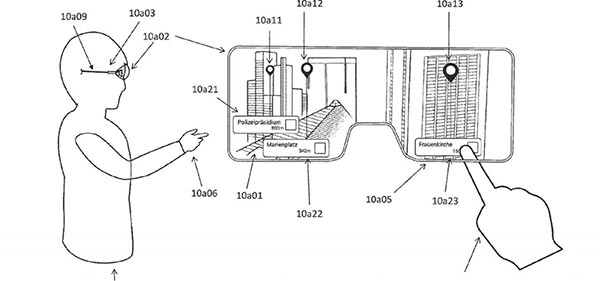
Source: Macworld UK
Further spurring these claims, Apple recently announced that it hit $10 billion in revenue from its wearables division. Given that an AR headset could easily function as a hub device collecting data from smartphones, desktops, and wearable devices, it is easy to see how Apple’s ecosystem may evolve into headset-centric territory.
Although the company has yet to make any official announcements, history indicates that Apple likes to emerge as a leader once it believes a technology is ready. The Blackberry—which was technically an earlier smartphone—was actually released before Apple’s iPhone. InfoTrends will continue to monitor Apple’s announcements as the year goes on, and we wouldn’t be surprised if a shift toward headset technology was unveiled in Q4 2020.
In the meantime, PSPs should prepare themselves. Headsets are an inevitability—they are already seeing success in the business space. The 2020s will almost certainly see this hardware make the jump to the consumer space, and it may happen sooner rather than later.
The Bottom Line
AR is not a future technology; it is part of the here and now. PSPs that have already begun investing in the technology are ahead of the game, but investments must always be made to enable more robust solutions that truly take advantage of a technology rather than merely providing a glimpse of what is possible. AR use is increasing, and it might soon receive a metaphorical adrenaline shot in the form of a commercially viable AR headset. Once this hardware is released, PSPs must be ready to use it. Even well-prepared PSPs will likely face intense competition from developers in other vertical industries, so now is the time to take action!
Colin McMahon is a Research Analyst at Keypoint Intelligence – InfoTrends. He primarily supports the Business Development Strategies and Customer Communications services. In this role, he creates and refines much of InfoTrends’ written content, including forecasts, industry analysis, and research/multi-client studies. He also assists with the editing and formatting processes for many types of deliverables.





